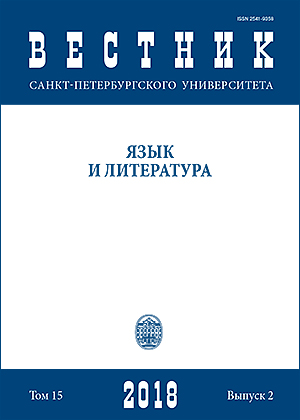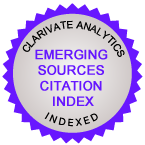Aesthetics of immersion: Creativity of the journalist in multimedia and transmedia projects
DOI:
https://doi.org/10.21638/11701/spbu09.2018.210Abstract
The article considers changes that occur both in audience expectations from journalism as a way of producing symbolic forms and in aesthetic and technological approaches to creating journalistic projects in multimedia multi-platform environments. These changes are primarily due to the fact that journalism is forced to abandon the cognitive needs of the audience (these needs are met in a new technological situation in other ways) and focus on other needs. One of the key concepts for research is immersion as a set of the techniques for aesthetic impact on the viewer, which allows him to be involved in a multimedia or transmedic environment of the screen narration. Considering the desire to involve the public in the art space as a traditional way of communication between the author and the viewer, the researchers dwell in detail on the techniques of the last decades of the media industry development, when it gradually becomes a part of the entertainment industry. An important step in this case is the development of television infotainment techniques, which were first used primarily in the news and then became a universal tool of the modern screen language. Analyzing the features of the space and time of multimedia and transmedic projects, the authors come to the conclusion that aesthetic unity is achieved in various ways. For multimedia projects, the specific game space of the screen action designed by the designers and programmers is determined by the viewer mastering it within the user interface. Transmedium stories, in which action develops on different platforms, often independently of each other, do not have a single space and time of action, retain their integrity mainly due to common heroes and values that form the mythology and mission of the project, deter users and stimulate their interactive participation.
Keywords:
aesthetics, immersion, multimedia journalism, infotainment, transmedia projects
Downloads
References
Литература
Text sources
References
Downloads
Published
How to Cite
Issue
Section
License
Articles of "Vestnik of Saint Petersburg University. Language and Literature" are open access distributed under the terms of the License Agreement with Saint Petersburg State University, which permits to the authors unrestricted distribution and self-archiving free of charge.






